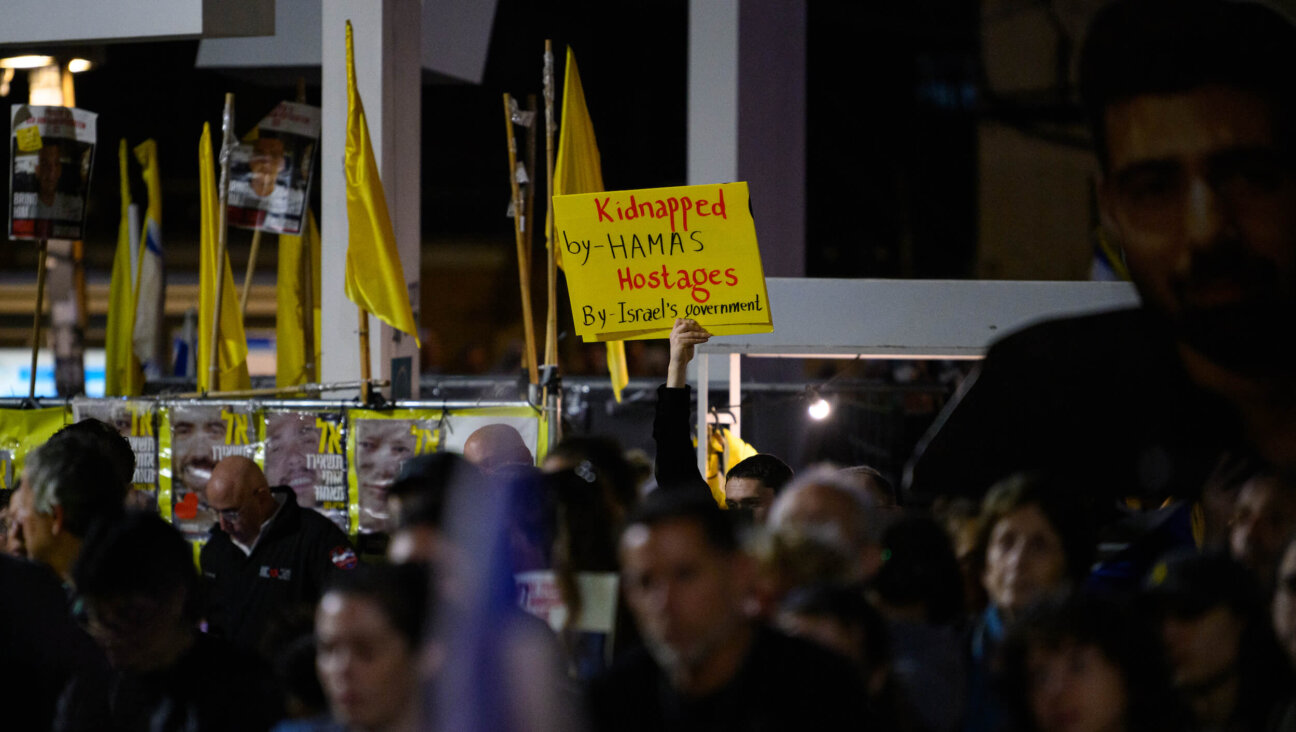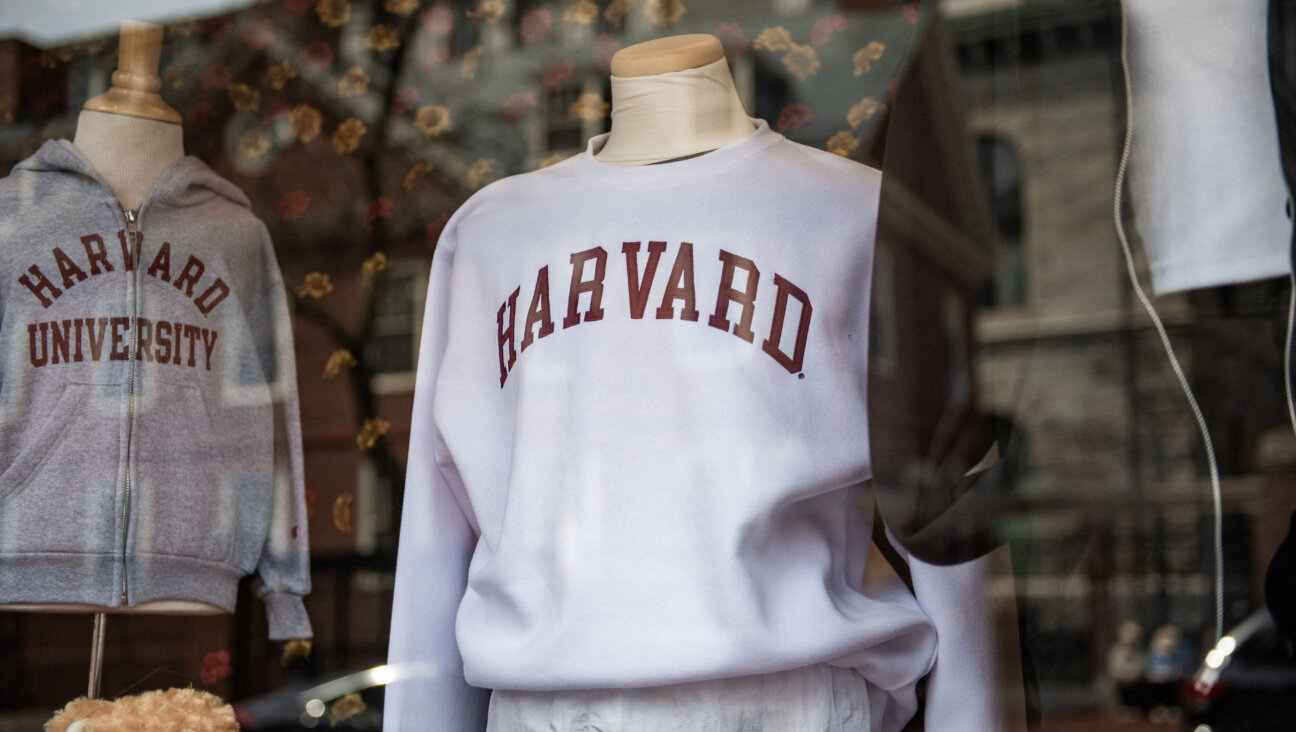Day Schools Stuck in Neutral

Image by getty images

Declining Numbers: Israeli Defense Minister Ehud Barak visits the Jewish Primary Day School of the Nation?s Capital, which, bucking a trend, is seeing its numbers grow. Despite a massive push, enrollment is down at Jewish schools, except for those serving the ultra-Orthodox. Image by getty images
The month of December brought some bad news for Jewish day school advocates. According to the Avi Chai Foundation, which tracks these things, day school enrollment saw a “modest decline” of about 1.4% in the 2011-12 school year, compared with the year before.
The sharpest decline was reported among the Solomon Schechter schools of Conservative Judaism, which experienced a 3.8% drop, from 11,786 students nationwide in 2010 to 11,338 this year. They were followed by so-called Community (non-denominational and/or federation-sponsored) schools, which fell 2.5%, and Modern Orthodox schools, which fell 1.6%. Centrist Orthodox schools, which are similar to Modern Orthodox but segregate classes by gender, actually gained 1.7%.
The numbers offer several useful insights. Perhaps the most useful, though hardly the insight the authors intended, is how easily numbers can mislead. Comparing this year with last, we find a slight drop in day school enrollment, presumably due to the economy. When we dig a little deeper, though, we’ll find a significant decline in non-Orthodox enrollment, while overall enrollment soars due to an ongoing Orthodox baby boom.
Looking deeper still, we find some eye-popping details. Most dramatic: the calamitous drop in Schechter school enrollment. In 1998, the year Avi Chai first took attendance, Schechter enrollment totaled 17,563 students in 63 schools nationwide. This year, as noted, enrollment is just 11,338 students in 43 schools. That’s a 35% decline.
The main reason, several Schechter officials told me, is an exodus of families and whole schools to a network of non-denominational community schools with fewer religious rules. Community-school enrollment rose from 14,849 in 75 schools in 1998 to 19,417 in 91 schools this year. A smaller number may have left for Hebrew charter schools in New York and South Florida.
We’ll also find an explosive growth in ultra-Orthodox or Haredi school enrollment, including both Hasidic and non-Hasidic (that is, misnaged or “yeshivish” black hat) schools, reflecting high birthrates. Modern Orthodox schools, by contrast, are essentially holding their own.
Avi Chai compiles its numbers by a census — literally contacting every day school in America and asking for numbers, grade by grade. It’s probably the most accurate source of American Jewish demographic information, though limited in range. However, the full census is only conducted every five years. The last one was in 2008.
The figures released this past December are based on a partial census that’s conducted annually between full headcounts. The partial tally includes only the five most modern school groupings: the four mentioned above (two Modern Orthodox, two non-Orthodox) plus the much smaller Reform day schools (total enrollment 4,300). Among those not included are the two Haredi groupings, Hasidic and Yeshivish, which account for more than half of all America’s Jewish day school students.
Comparing 2011 and 2010 enrollment figures, as Avi Chai’s December announcement did, doesn’t tell us much. Comparing 2011 with 2008, however, tells us a great deal. Going back to 1998 tells us even more.
Nationwide, day school enrollment increased 24% in the decade between 1998 and 2008, jumping from 184,333 students to 228,174. Experts and community leaders often cite this increase to suggest growing acceptance of day schooling.
Breaking it down by denomination, that’s not so clear. Of the 43,841 new enrollments over the decade, 35,238 were in Haredi schools, virtually all due to birthrate. Another 4,858 new enrollments were in Chabad schools, which are counted separately for complicated reasons. The non-Orthodox streams — Conservative, Reform and Community schools, on which continuity mavens mostly pin their hopes — saw their combined enrollment grow by only 1,733.
In absolute numbers, Haredi enrollment increased from 86,702 in 1998 to 121,940 in 2008, a 41% rise. The three non-Orthodox streams grew in that time from 36,897 to 38,630, or 4.7%.
In the three years since 2008, following the collapse of the economy, non-Orthodox enrollment dropped 9.5%, to just 34,977. Non-Orthodox enrollment is even lower this year (by 5.2%) than it was in 1998, when Avi Chai first counted.
Avi Chai didn’t collect Haredi enrollment figures for 2011. It’s safe to assume, though, that birthrates remained stable and virtually none moved to secular schools despite the economy. Accordingly, Haredi school enrollments probably now total 144,500.
The other major category, Modern and Centrist Orthodox, has remained virtually unchanged since 1998 at a combined 48,000, give or take a few hundred. Here again, however, numbers can deceive. Those two streams reported non-Orthodox student populations in 1998 of 20% and 10%, respectively. Their flat totals probably reflect declining non-Orthodox enrollment matched by a growing Orthodox population.
Today’s total enrollment nationwide can therefore be estimated at roughly 242,000. About 14% are in non-Orthodox schools, 20% Modern Orthodox and 60% Haredi.
In 1998, those numbers were 20% non-Orthodox, 26% Modern Orthodox and 47% Haredi.
In a category by themselves are Chabad schools. These are an odd mix; some serve the traditional population of Lubavitch Hasidim in New York, while others around the country are administered by Chabad rabbis but serve mostly non-Orthodox families. In 1998, Chabad enrollment totaled 7,438, of whom 30% or 2,232 were estimated to be non-Orthodox and 5,206 Hasidic. In 2008, total enrollment was 12,296. Non-Orthodox Chabad pupils outside New York probably represent about 45% of that, leaving a Lubavitch Hasidic school population of about 6,800.
The biggest Hasidic sect is not Chabad, but Satmar. In 1998, Satmar school enrollment totaled 17,500, roughly equal to Schechter. It accounted for 45% of the total Hasidic school population of 39,000, and nearly 10% of all day school enrollment nationwide. Satmar growth has been slower than Hasidic enrollment overall; in 2008, Satmar schools enrolled 22,000 in a total Hasidic school population of 61,000, or about 36%. Probable reasons include families joining other sects to escape an ugly Satmar leadership feud, plus smaller Hasidic sects long in Satmar’s shadow growing large enough to launch their own schools.
Nonetheless, Satmar still accounts for about 10% of all day school enrollment. And it’s now about twice the size of Schechter.
Here, then, is the most important insight to be found in Avi Chai’s numbers: Day schooling isn’t catching on among non-Orthodox Jews, despite two decades and millions of dollars spent pushing the idea. The proposition that day schools are the answer to assimilation isn’t panning out.
Some argue that while day schools won’t change the masses, they’ll provide the leadership. Unfortunately, the vast majority of day school growth occurs within a population that shows no interest in engaging with the rest of the community.
Contact J.J. Goldbert at [email protected]
The Forward is free to read, but it isn’t free to produce

I hope you appreciated this article. Before you go, I’d like to ask you to please support the Forward.
Now more than ever, American Jews need independent news they can trust, with reporting driven by truth, not ideology. We serve you, not any ideological agenda.
At a time when other newsrooms are closing or cutting back, the Forward has removed its paywall and invested additional resources to report on the ground from Israel and around the U.S. on the impact of the war, rising antisemitism and polarized discourse.
This is a great time to support independent Jewish journalism you rely on. Make a Passover gift today!
— Rachel Fishman Feddersen, Publisher and CEO
Most Popular
- 1

News Student protesters being deported are not ‘martyrs and heroes,’ says former antisemitism envoy
- 2

News Who is Alan Garber, the Jewish Harvard president who stood up to Trump over antisemitism?
- 3

Fast Forward Suspected arsonist intended to beat Gov. Josh Shapiro with a sledgehammer, investigators say
- 4

Politics Meet America’s potential first Jewish second family: Josh Shapiro, Lori, and their 4 kids
In Case You Missed It
-
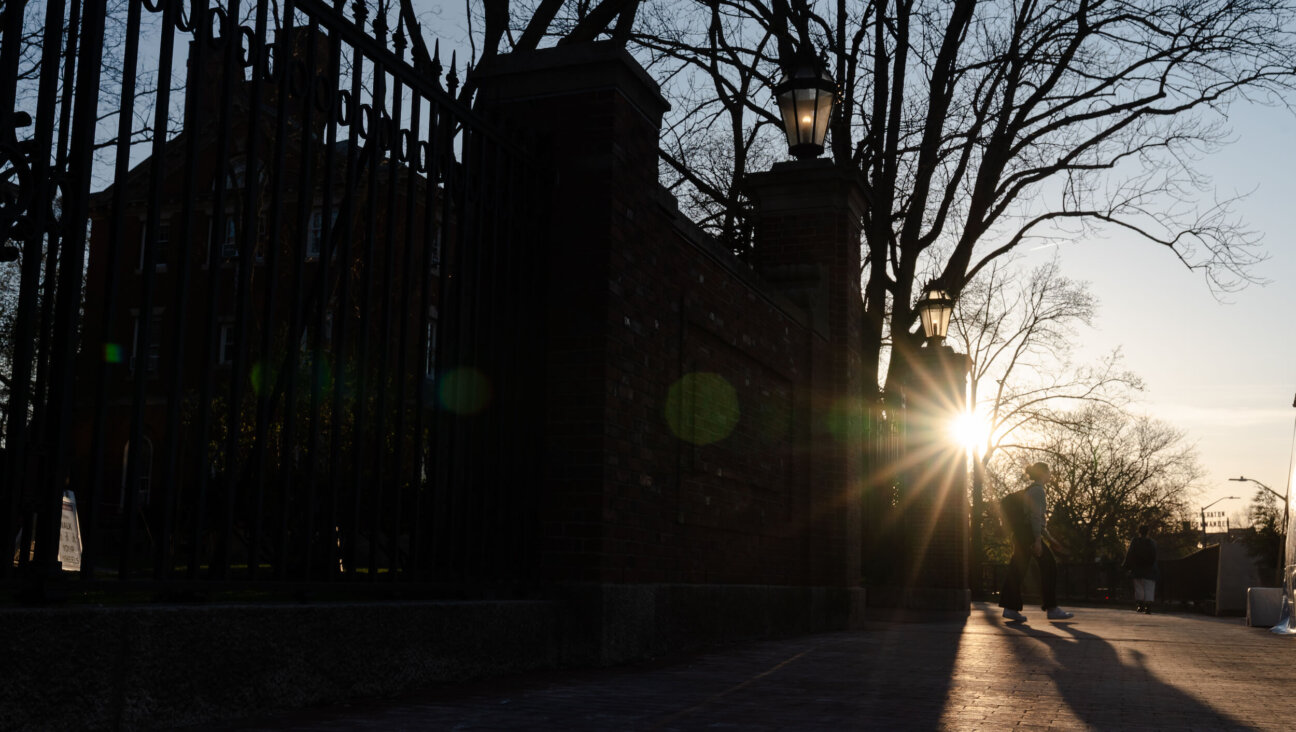
Opinion Why can Harvard stand up to Trump? Because it didn’t give in to pro-Palestinian student protests
-
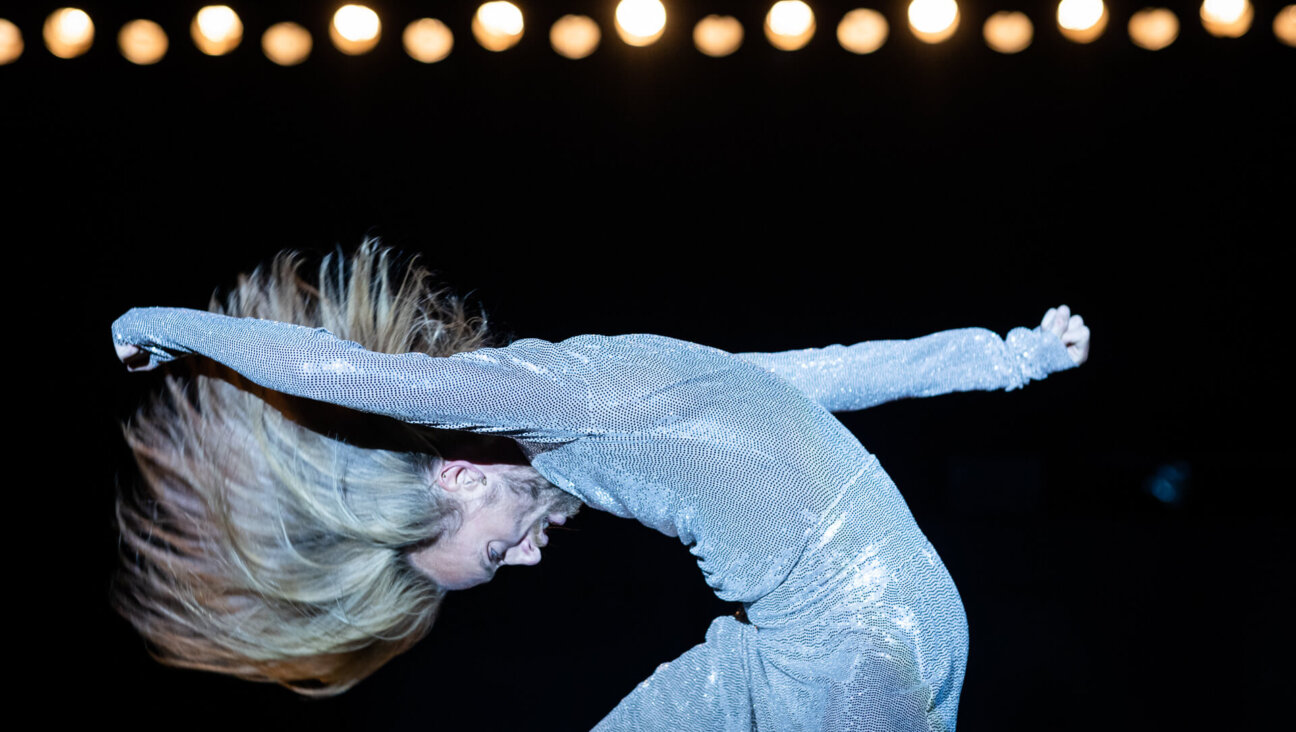
Culture How an Israeli dance company shaped a Catholic school boy’s life
-
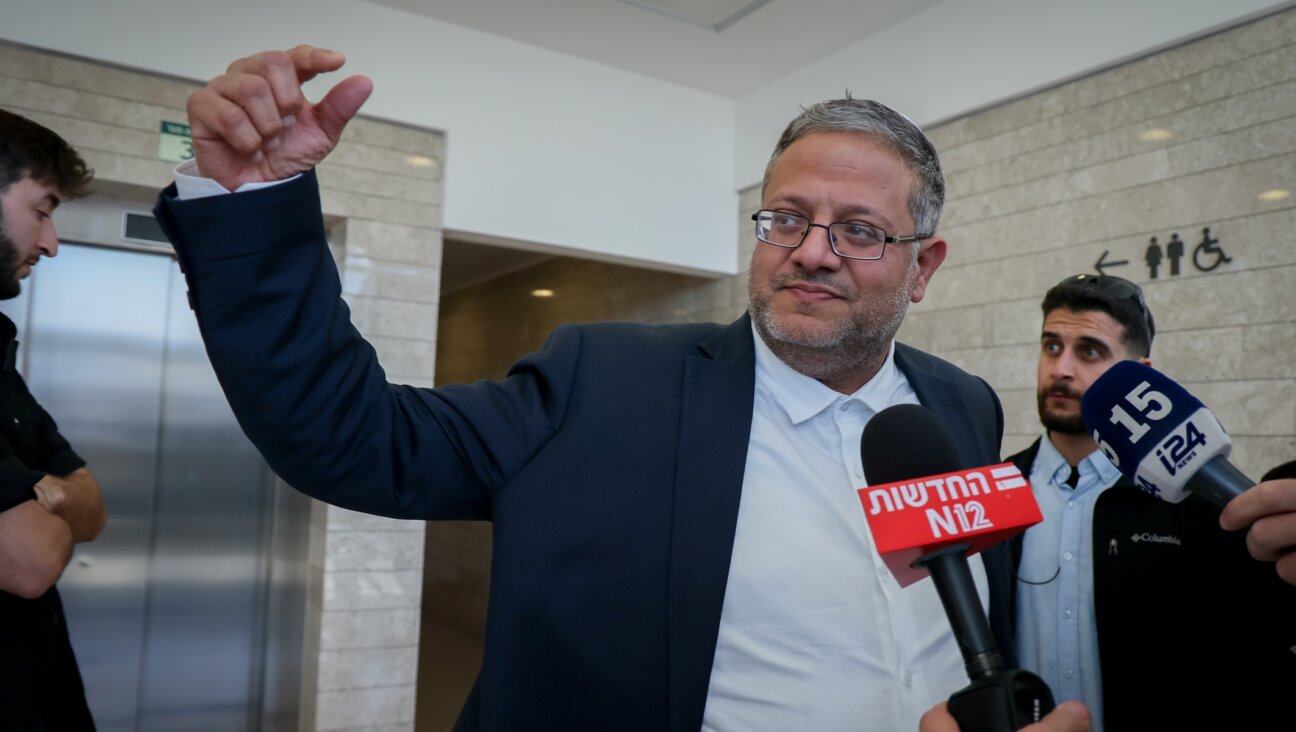
Fast Forward Brooklyn event with Itamar Ben-Gvir cancelled days before Israeli far-right minister’s US trip
-

Culture How Abraham Lincoln in a kippah wound up making a $250,000 deal on ‘Shark Tank’
-
Shop the Forward Store
100% of profits support our journalism
Republish This Story
Please read before republishing
We’re happy to make this story available to republish for free, unless it originated with JTA, Haaretz or another publication (as indicated on the article) and as long as you follow our guidelines.
You must comply with the following:
- Credit the Forward
- Retain our pixel
- Preserve our canonical link in Google search
- Add a noindex tag in Google search
See our full guidelines for more information, and this guide for detail about canonical URLs.
To republish, copy the HTML by clicking on the yellow button to the right; it includes our tracking pixel, all paragraph styles and hyperlinks, the author byline and credit to the Forward. It does not include images; to avoid copyright violations, you must add them manually, following our guidelines. Please email us at [email protected], subject line “republish,” with any questions or to let us know what stories you’re picking up.







